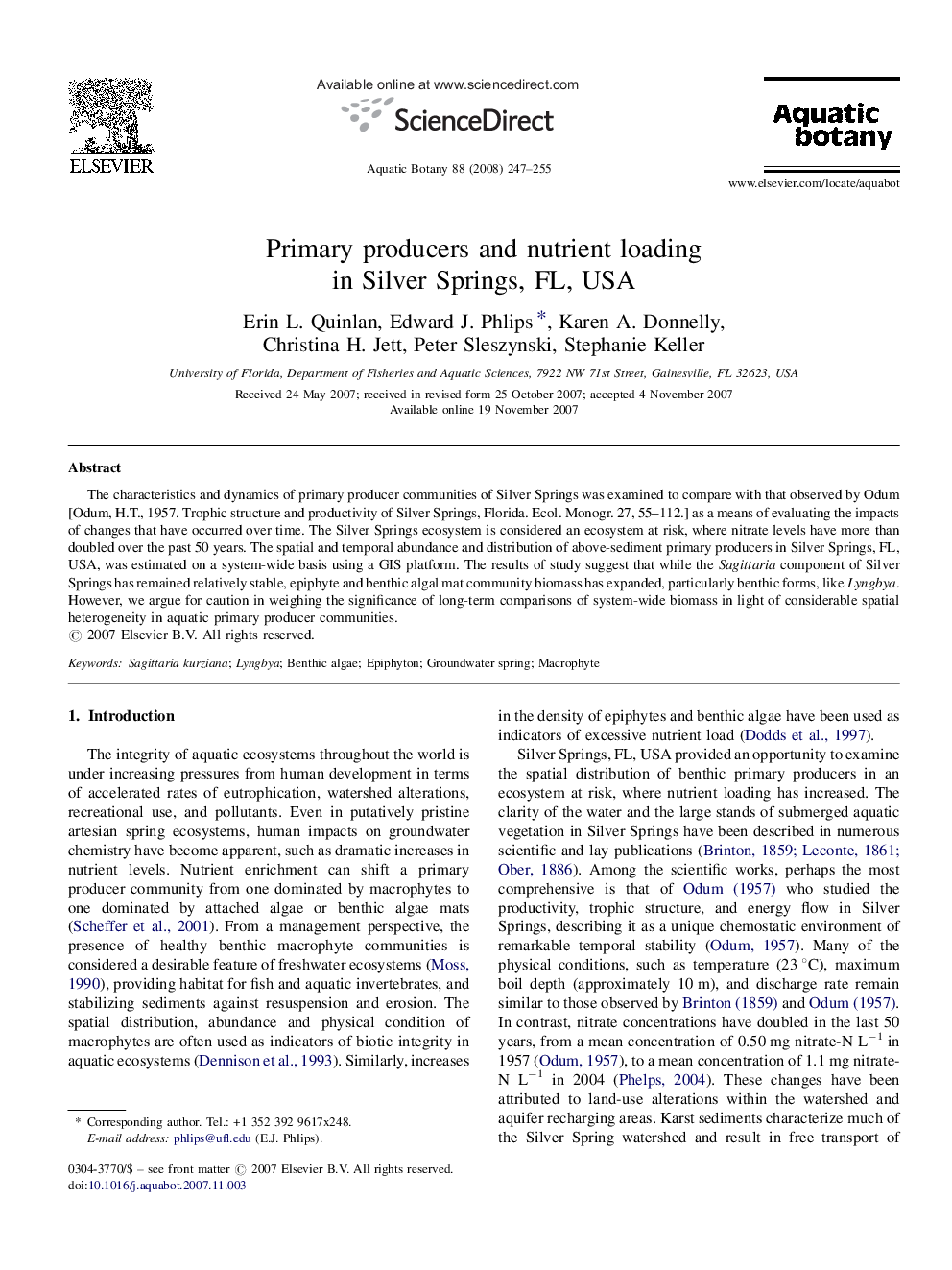| Article ID | Journal | Published Year | Pages | File Type |
|---|---|---|---|---|
| 4528590 | Aquatic Botany | 2008 | 9 Pages |
The characteristics and dynamics of primary producer communities of Silver Springs was examined to compare with that observed by Odum [Odum, H.T., 1957. Trophic structure and productivity of Silver Springs, Florida. Ecol. Monogr. 27, 55–112.] as a means of evaluating the impacts of changes that have occurred over time. The Silver Springs ecosystem is considered an ecosystem at risk, where nitrate levels have more than doubled over the past 50 years. The spatial and temporal abundance and distribution of above-sediment primary producers in Silver Springs, FL, USA, was estimated on a system-wide basis using a GIS platform. The results of study suggest that while the Sagittaria component of Silver Springs has remained relatively stable, epiphyte and benthic algal mat community biomass has expanded, particularly benthic forms, like Lyngbya. However, we argue for caution in weighing the significance of long-term comparisons of system-wide biomass in light of considerable spatial heterogeneity in aquatic primary producer communities.
